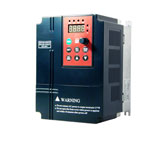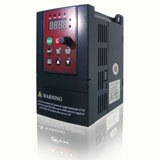Analogue transmitters of PLC
The issues with analogue transmitters are usually about type of signal, calibration, scaling, whether or not they are feedback for a PID loop, sometimes you may want to do something clever like integrating the signal, I mean I suppose that a great deal of it depends on the particular application. Although PLCs usually involve a great deal of Boolean data, the nature of how PLC processors work mean that you can sometimes do some clever things working at the word level rather than at the individual bit level. You might, for example, process groups of alarms or similar collections of Boolean data in this way. Another example that springs to mind is controlling variable frequency drives on a databus. The VFD manufacturers usually organize the control using a command word and a status word. Individual Boolean signals can be accessed if required, but sometimes you can handle that data efficiently at the word level using bit shifts and masking. There may, for example, be a series of bits identifying different faults, but if they are allocated contiguously, which you would usually expect them to be, it might be more efficient to create a general 'fault' signal using masking and bit shifting rather than Anding all the individual fault bits.
Any analog transmitter be it voltage or current sends out a proportional signal. Example: 4-20mA can be scaled to 0-100 psi or whatever you want. The A/D converter in the analog card just changes the signal from the device to a numerical value for the PLC to use. Remember that PLC's are digital devices. The analog card is a conversion device so that the PLC can understand the signal. For instance 4-20mA can be 0-32767 in a register where 4 ma =0 and 20ma = 32767. It's that simple. That value is held in a register to do whatever you want with it. In A-B plc's, the value is stored in a data register associated with that Analog Input card. The beauty of the A-B system like Compact or Contrologix is that the RSLogix software allows you to do your scaling function right in the Analog card setup. Nothing more to do. You can then transfer this value anywhere in the system you want using a simple "move" function if you need to. When you get into devices like a Coriolis flow meter, you may need to talk on Modbus. In that case you are using a modbus card to read a predefined register value in the device. For example, you look at say register 31009 for the flow rate. All those register values are integers so that makes data manipulation easy.
Any analog transmitter be it voltage or current sends out a proportional signal. Example: 4-20mA can be scaled to 0-100 psi or whatever you want. The A/D converter in the analog card just changes the signal from the device to a numerical value for the PLC to use. Remember that PLC's are digital devices. The analog card is a conversion device so that the PLC can understand the signal. For instance 4-20mA can be 0-32767 in a register where 4 ma =0 and 20ma = 32767. It's that simple. That value is held in a register to do whatever you want with it. In A-B plc's, the value is stored in a data register associated with that Analog Input card. The beauty of the A-B system like Compact or Contrologix is that the RSLogix software allows you to do your scaling function right in the Analog card setup. Nothing more to do. You can then transfer this value anywhere in the system you want using a simple "move" function if you need to. When you get into devices like a Coriolis flow meter, you may need to talk on Modbus. In that case you are using a modbus card to read a predefined register value in the device. For example, you look at say register 31009 for the flow rate. All those register values are integers so that makes data manipulation easy.



